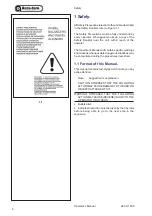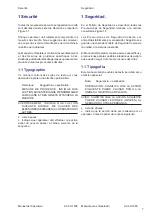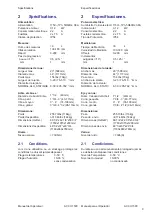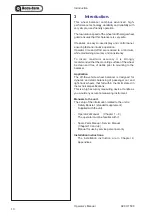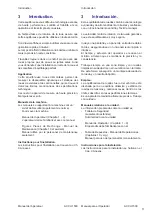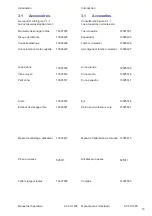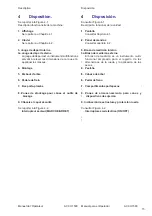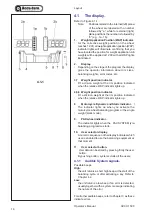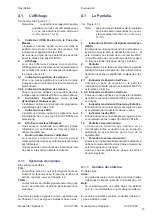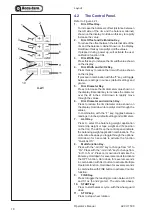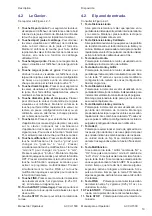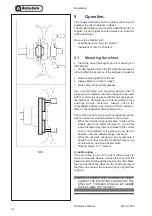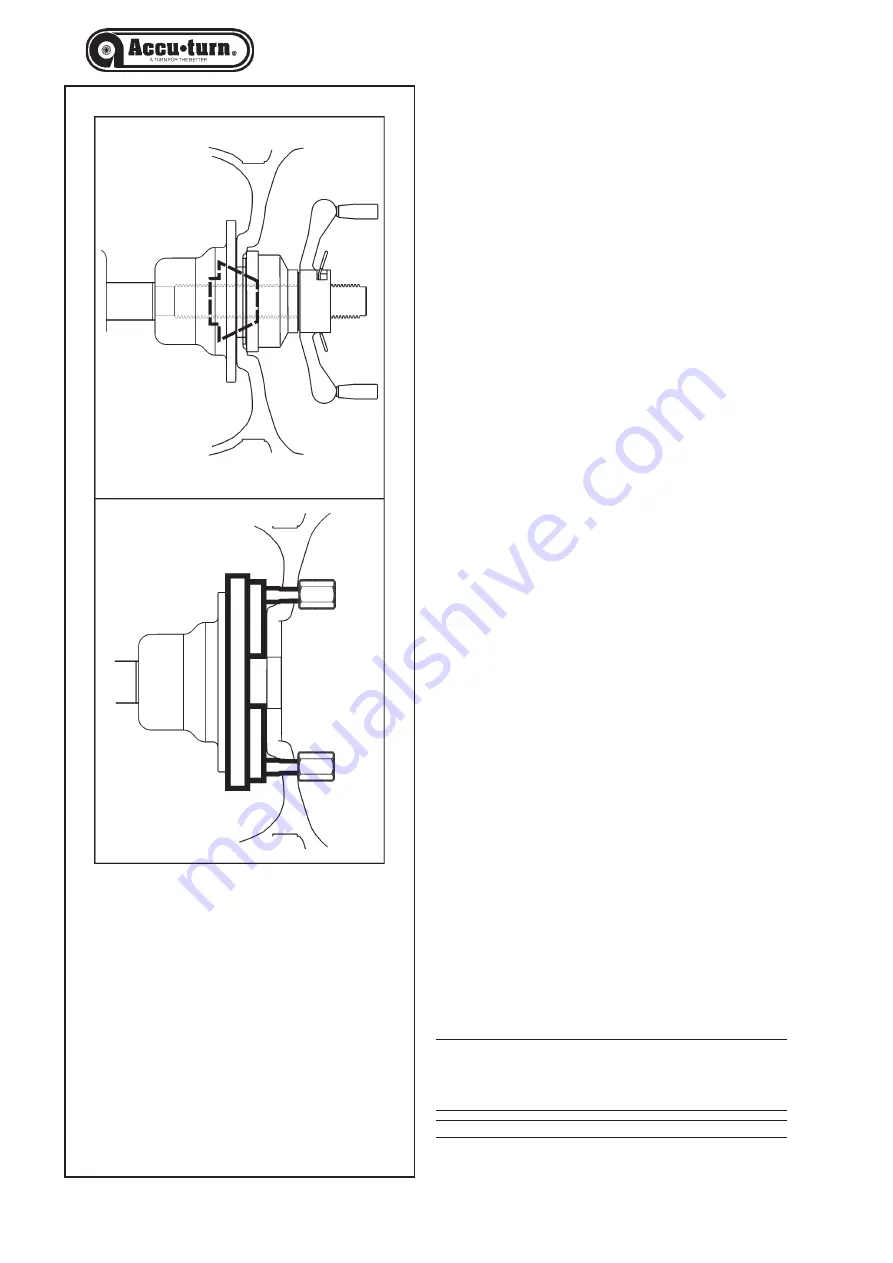
20
ACCU 1500
Operations
Operator’s Manual
5.1-1
5
Operation.
This chapter describes how to operate the computer
balancer in order to balance a wheel.
The standard balancing runs will be described first. In
chapter 5.4 and higher special modes and functions
will be described.
Be sure to be familiar with:
- possible dangers, refer to chapter 1
- the balancer, refer to chapter 4.
5.1
Mounting the wheel.
•
Clean the wheel thoroughly prior to mounting it to
the balancer.
•
No dirt should be left on the rim of the tire (excessive
dirt will effect the accuracy of the balance procedure)
.
•
Remove all weights from the rim.
•
Always balance a “clean” wheel!
•
Work safely. Wear safety glasses.
Use only clamping and centering devices that fit
properly on the balancer and are designed to be used
with it. In order to keep pace with technical progress,
the balancer, clamping and centering devices may
undergo design revisions. Always check for
compatibility between the devices and the balancer.
Refer to the supplied technical information.
The method used to mount a wheel depends on the
way the wheel is centered relative to the vehicle.
- When the rim has a true center hole, (a hub centric
wheel), use a cone. Refer to Figure 5.1-1, top. This
is also the faster way to mount a wheel. If the correct
cone is not available, or if a wheel is very hard to
balance, using an adapter flange may help.
- When the rim does not have a true center hole it
should be centered on the mounting holes (a lug
centric wheel), using an adapter plate.
- Refer to Figure 5.1-1, bottom.
Cone Mounting
Cone mounting is one of the most common ways to
mount automobile wheels. Choose the cone that fits
best when placed through the wheel center hole. Place
the cone and then the wheel on the shaft and ensure
that the cone centers the wheel when you tighten the
wing nut.
WARNING: ENSURE THAT THE WHEEL IS FIRMLY
AGAINST THE MOUNTING FLANGE AND THE
WING NUT THREADS ENGAGE
AT LEAST
THREE TURNS ON THE SHAFT.

